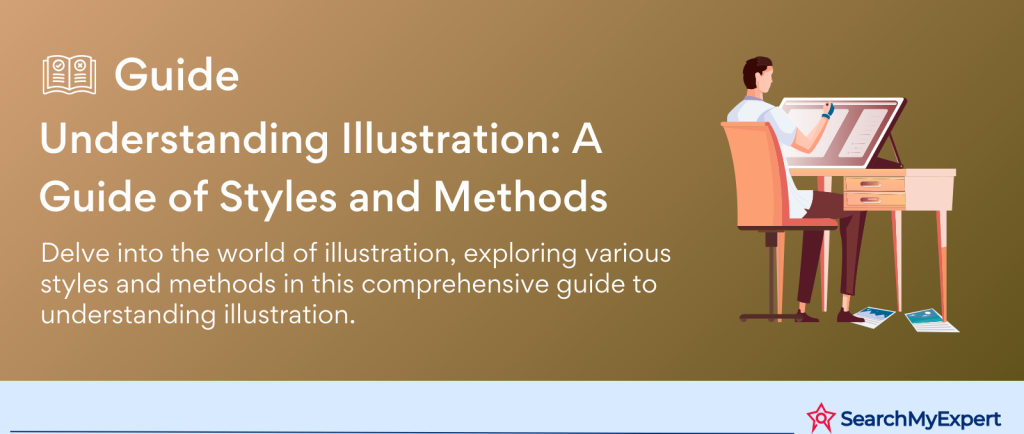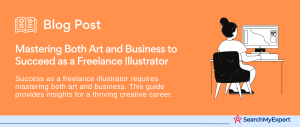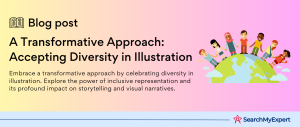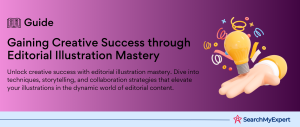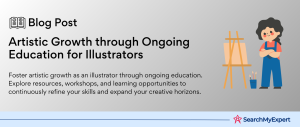The Enchanting World of Illustration: A Portal to Infinite Creativity
In the vibrant tapestry of the visual arts, illustration stands as a luminous thread, weaving through the fabric of various fields with its unique charm and versatility. This art form transcends mere aesthetics, playing a pivotal role in storytelling, communication, and expression across a multitude of domains. From the enchanting illustrations in children’s books to the persuasive graphics in advertising, from the detailed scientific drawings to the captivating characters in video games, illustrations breathe life into ideas, making them visually tangible and relatable.
The Importance of Illustration Across Diverse Fields
The power of illustration is far-reaching. In literature, illustrations enrich narratives, providing visual companions to words and enhancing the reader’s imagination. In the realm of education, they break down complex concepts into digestible visual forms, aiding in learning and retention. The advertising industry leverages illustrations to create impactful, memorable campaigns that resonate with audiences. In digital media, illustrations are pivotal in user interface design, improving user experience and guiding interactions. Even in scientific fields, detailed illustrations make intricate concepts accessible and understandable.
The versatility of illustration lies in its ability to adapt to the context and requirements of each field, making it an indispensable tool in conveying messages and ideas. It’s a bridge between the creator and the audience, where emotions, narratives, and information are conveyed with clarity and creativity.
A Kaleidoscope of Styles: Exploring the Diversity in Illustration
The world of illustration is a kaleidoscope, constantly shifting and presenting an array of styles, each with its unique characteristics and charm. These styles range from the realistic and detailed to the abstract and conceptual. There’s the whimsical charm of children’s book illustrations, the edgy and bold lines of comic book art, the surreal and imaginative realms of fantasy art, and the minimalist elegance of modern digital illustrations.
This diversity in styles is not just a showcase of artistic skills but a reflection of the myriad ways in which illustrators see the world. Each style offers a different lens through which stories and ideas can be conveyed. Realism brings a sense of authenticity and detail, abstract art challenges the norms and evokes deeper meanings, while caricatures and cartoons add humor and lightness to serious subjects.
Exploring these styles is like embarking on a journey through different cultures and eras, each with its own language of shapes, lines, colors, and textures. It’s a journey that promises endless inspiration and opportunities for discovery.
The Purpose of Exploring Different Illustration Styles
Delving into various illustration styles serves multiple purposes. For artists and illustrators, it’s a path to artistic growth and self-discovery. Experimenting with different styles helps in honing skills, understanding diverse techniques, and finding one’s unique voice in the crowded world of art. It’s an exploration that encourages stepping out of comfort zones, pushing creative boundaries, and embracing new challenges.
For those in creative industries, understanding different illustration styles is crucial in choosing the right visual approach for projects. Each style communicates differently and resonates with different audiences. A children’s book illustrator might favor a playful, colorful style, while a scientific illustrator would lean toward detailed, accurate representations.
Traditional Techniques in Illustration
The world of traditional illustration is rich with techniques that have stood the test of time, each carrying its unique legacy and charm. In this exploration, we delve into some of the most revered styles – realism, line art, pointillism, and cross-hatching – unraveling the tools, materials, and distinct visual characteristics that define each. These styles not only showcase the versatility of hand-drawn art but also connect us to the historical evolution of visual storytelling.
Realism: Capturing Life with Precision and Detail
Realism in illustration is akin to holding a mirror to the world. It strives to depict subjects with as much accuracy and detail as possible, often creating an illusion of reality.
- Tools and Materials:
Realist illustrators traditionally employ a range of pencils, from hard (H) to soft (B) grades, allowing for a spectrum of tones and textures. Charcoal, graphite, and high-quality papers are also integral, providing the necessary subtlety for lifelike shading and textures. For color, oil paints, watercolors, or acrylics are used, each offering different levels of opacity and blending capabilities. - Visual Characteristics:
Realism is characterized by accurate proportions, detailed shading, and a keen observation of light and shadow. Textures are meticulously rendered to mimic the appearance of surfaces like skin, fabric, or nature. - Iconic Examples: Works by Leonardo da Vinci, such as the “Mona Lisa,” exemplify the precision and depth achievable in realism. Andrew Loomis, a modern master, is renowned for his realistic illustrations in art instruction books, blending technique with an innate understanding of human anatomy.
Line Art: The Elegance of Simplicity
Line art is a minimalist approach in illustration, where the use of lines is the primary means of conveying form and structure.
- Tools and Materials:
This style often utilizes ink pens, fine liners, or brushes. The choice of paper is crucial – smooth surfaces are preferred for clean, uninterrupted lines. Digital tools have also become popular, offering precision and versatility. - Visual Characteristics:
Line art is defined by its clean, crisp lines, with varying thicknesses used to denote depth and perspective. It often eschews shading for stark contrasts and relies on the purity of contour lines to define shapes and details. - Iconic Examples:
The works of Aubrey Beardsley and Alphonse Mucha showcase the expressive potential of line art, with their Art Nouveau illustrations highlighting elegance and fluidity.
Pointillism: A Symphony of Dots
Pointillism is a technique where small dots of color are applied in patterns to form an image. It’s a meticulous and time-consuming process but produces uniquely textured illustrations.
- Tools and Materials:
Fine-pointed pens or brushes are used to create small, distinct dots. Artists often use inks or watercolors on sturdy paper that can withstand repetitive application without warping. - Visual Characteristics:
From a distance, pointillism illustrations appear as continuous tones, but up close, the individual dots are visible, creating a dynamic interplay between form and texture. This style is known for its vibrancy and the illusion of depth and dimension created by the dots. - Iconic Examples:
Georges Seurat and Paul Signac are pioneers of this style, with Seurat’s “A Sunday Afternoon on the Island of La Grande Jatte” being a quintessential example of how pointillism can create intricate, luminous scenes.
Cross-Hatching: The Art of Shadow and Texture
Cross-hatching is a technique used to create texture and shading in illustrations, utilizing intersecting sets of parallel lines.
- Tools and Materials: Ink pens, fine liners, and sometimes pencils are used for cross-hatching. The choice of paper can vary, but a medium texture is often preferred to add an extra dimension to the hatched lines.
- Visual Characteristics:
Cross-hatching creates depth and dimension through layers of lines. The density and angle of the lines are manipulated to create gradients and textures, effectively simulating the effects of light and shadow. - Iconic Examples: The works of Albrecht Dürer and Gustave Doré are stellar examples of cross-hatching, showcasing how this technique can evoke a dramatic, almost tactile quality in illustrations.
The Dynamic World of Digital Illustration
Digital illustration has revolutionized the art world, bringing with it an era of boundless creative possibilities. This modern form of art leverages technology to push the boundaries of traditional illustration, offering artists unprecedented flexibility and a vast array of tools to bring their visions to life. From intricate vector art to nostalgic pixel art, digital platforms have expanded the horizons of what can be achieved in illustration.
The Advent of Digital Art: A New Era of Creativity
Digital art marks a significant shift in the way artists create and share their work. It combines the essence of traditional techniques with the advancements of digital technology, allowing for more experimentation and innovation.
- Popular Software Programs: The landscape of digital illustration is dotted with a variety of software programs, each offering unique features and tools. Adobe Photoshop, known for its powerful photo editing capabilities, is also a favorite among illustrators for its versatility in creating complex digital paintings and textures. Procreate, a popular app for iPad, has gained a massive following for its user-friendly interface and natural drawing experience, especially when used with the Apple Pencil. Adobe Illustrator is the go-to software for vector art, enabling artists to create clean, scalable graphics that are perfect for both print and digital media.
Styles Specific to Digital Platforms
Digital platforms have given rise to new styles and techniques that are distinct to the digital realm.
- Vector Art:
Vector art is a style characterized by its use of geometric shapes and lines, created using vector graphics software like Adobe Illustrator. Unlike pixel-based art, vector illustrations can be scaled indefinitely without any loss in quality, making them ideal for a wide range of applications, from logo design to large-scale prints. - Pixel Art:
Harking back to the early days of computer graphics, pixel art is a digital style where images are created and edited at the pixel level. It’s often associated with retro video games and has a unique, nostalgic charm. - Photo Manipulation:
This style involves altering and combining photographic images to create surreal or fantastical compositions. It’s a style that blends the boundaries between photography and painting, often resulting in striking, visually captivating pieces.
Advantages of Digital Tools: Flexibility, Scalability, and Experimentation
The transition to digital illustration has brought several key advantages that have transformed the art form.
- Flexibility:
One of the most significant advantages of digital illustration is the flexibility it offers. Artists can easily undo mistakes, try out different color schemes, and make adjustments without the fear of ruining their work. This freedom encourages experimentation and allows artists to explore various creative avenues. - Scalability:
Digital illustrations, especially vector graphics, can be scaled to any size without compromising on quality. This scalability is crucial for applications in various fields like advertising, where the artwork needs to be adapted to different formats and sizes. - Experimentation:
The wide array of tools and effects available in digital software opens up new possibilities for experimentation. Artists can easily blend different styles, incorporate 3D elements, and even animate their illustrations, pushing the boundaries of traditional art.
Contemporary Fusion in Illustration
In the ever-evolving landscape of art, contemporary fusion stands out as a compelling trend where artists blend traditional and digital techniques to create unique, multifaceted works. This approach is not just about mixing mediums; it’s about merging different eras and styles of art, breathing new life into each with a modern twist. By integrating traditional elements like ink, watercolor, and collage with digital manipulation, artists are crafting pieces that are rich in texture, depth, and narrative.
The Blend of Traditional and Digital: A New Artistic Language
This fusion creates a new artistic language that speaks to both the past and the present. Artists might start with a traditional base, such as a watercolor painting or an ink drawing, and then layer digital elements through software like Adobe Photoshop or Procreate. This process allows for an interplay between the tangible textures of physical media and the limitless possibilities of digital tools.
Examples of Mixed Media Pieces:
One might encounter a piece where delicate watercolor washes blend seamlessly into digital gradients, or where bold ink lines are enhanced with digital textures to create a striking contrast. Collages take on a new dimension when traditional cut-outs are combined with digital imagery, creating layers of meaning and visual interest.
Styles Thriving on Experimentation: Surrealism, Pop Art, and Graphic Design
The fusion approach particularly resonates with certain styles that inherently thrive on experimentation and the blending of different elements.
- Surrealism:
In contemporary surrealistic illustrations, the combination of traditional drawing or painting with digital manipulation allows for the creation of dream-like scenes that defy logic and physical laws. Digital tools enable the exaggeration of features, the blending of elements, and the creation of otherworldly colors that enhance the surreal quality of the artwork. - Pop Art:
Modern pop art illustrations often use this fusion technique to create vibrant, high-impact visuals. Traditional techniques like screen printing or hand-drawing are combined with digital editing to amplify the bold colors and crisp lines characteristic of this style. - Graphic Design:
In the field of graphic design, this blending of techniques is particularly evident. Designers might incorporate hand-drawn elements or textures into digital layouts, bringing a personal, organic touch to their designs. This approach can add depth and character to logos, posters, and other design elements, setting them apart in a digitally dominated world.
Advantages of Fusion Techniques: Versatility and Personal Expression
The fusion of traditional and digital techniques offers numerous advantages. It allows artists to explore a wider range of textures, techniques, and effects than they could with either approach alone. This versatility opens up new avenues for personal expression and creative storytelling, enabling artists to communicate their ideas in innovative ways.
Moreover, this blended approach resonates with a contemporary audience that appreciates both the authenticity of handcrafted art and the precision of digital work. It reflects the current era – one where technology and tradition coexist and enrich each other.
Finding Your Voice in Illustration
In the vast and diverse world of illustration, finding your own voice is akin to embarking on a personal journey of creative discovery. It’s about carving out a unique space in the art world that resonates with your individuality, experiences, and perspectives. This process involves not just mastering various techniques and styles, but also diving deep into your own interests, experimenting fearlessly, and developing a distinctive approach that sets your work apart.
The Importance of Personal Exploration
The first step in finding your artistic voice is personal exploration. This involves understanding what inspires you, what themes or subjects you are drawn to, and what messages you wish to convey through your art. It’s a process of introspection, where you reflect on your experiences, interests, and passions, and consider how these can be expressed visually.
Experimentation with Different Mediums, Techniques, and Subject Matter: Experimentation is crucial in this journey. Try working with different mediums – from pencil and ink to watercolor and digital tools. Each medium has its own character and can influence your artistic style. Experiment with various techniques like realism, abstract, or mixed media. Don’t hesitate to explore different subject matters, be it landscapes, portraits, or conceptual art. This exploratory phase is essential for broadening your skills and understanding what resonates with you the most.
Tips for Building a Cohesive Portfolio
As you experiment and create, you’ll begin to identify certain patterns, preferences, and strengths in your work. Use these insights to start building a cohesive portfolio.
- Showcasing Your Best Work:
Your portfolio should represent your best work and reflect your unique voice. Choose pieces that not only demonstrate your skills but also tell a story about who you are as an artist. - Consistency in Style and Theme:
While it’s important to show versatility, your portfolio should also have a consistent theme or style that ties your work together. This consistency helps in establishing your identity as an artist and makes your work recognizable. - Maintaining an Evolving Portfolio:
Remember, your portfolio is not static. As you grow and evolve as an artist, so should your portfolio. Regularly update it with new works that reflect your current skills and artistic direction.
Finding Your Artistic Niche
Finding your niche is about identifying where your passion and strengths intersect with demand in the art world.
- Identifying Your Strengths and Interests:
Reflect on what aspects of illustration you excel at and enjoy the most. Are you drawn to detailed character design, abstract art, or perhaps digital landscapes? Your niche should align with these strengths and interests. - Research and Market Trends:
Understand the market and current trends in illustration. This doesn’t mean conforming to them, but rather seeing how your unique voice can contribute something new and fresh to the art world. - Networking and Feedback:
Engage with the art community. Attend workshops, exhibitions, or online forums. Feedback from peers and mentors can provide valuable insights and help refine your artistic voice.
Inspiration and Resources for Aspiring Illustrators
Embarking on a journey in illustration requires not just talent and skill but also inspiration and the right resources. The path to becoming a successful illustrator is paved with continuous learning, community support, and diverse sources of inspiration. In this digital age, a plethora of resources is available at your fingertips, from online tutorials to inspiring artists. Here’s a guide to some essential resources and sources of inspiration for aspiring illustrators.
Online Tutorials and Art Books: Learning from the Masters
The internet is a treasure trove of learning materials for illustrators at all levels.
- Online Tutorials:
Websites like Skillshare, Udemy, and Coursera offer a wide range of courses covering various illustration techniques and styles. Platforms like YouTube also host countless free tutorials from experienced artists. - Art Books:
Books are a timeless resource. “The Illustrator’s Guidebook” by 21 Draw, “Color and Light” by James Gurney, and “Drawing on the Right Side of the Brain” by Betty Edwards are just a few must-reads that offer deep insights into the art of illustration.
Communities and Workshops: Building Connections
Being part of an art community can provide invaluable support, feedback, and motivation.
- Online Communities:
Platforms like Behance, DeviantArt, and ArtStation allow you to showcase your work, connect with other artists, and gain inspiration. Social media platforms like Instagram and Twitter also offer vibrant art communities. - Workshops and Conferences:
Participating in workshops, webinars, and conferences is a great way to learn new skills and network with other artists. Events like ICON Conference, LightBox Expo, and local art workshops can be enriching experiences.
Diverse Inspirational Sources: Beyond the Canvas
Inspiration can come from anywhere – not just from other illustrations or art forms.
- Various Art Forms: Explore different art forms like photography, sculpture, or cinema. Each medium offers unique perspectives and techniques that can inspire your illustration work.
- Nature and Everyday Life:
Often, the best inspiration comes from the world around you. Nature’s intricate patterns, urban landscapes, or even mundane everyday scenes can spark creativity.
Inspirational Illustrators from Diverse Backgrounds
Learning about and following the work of illustrators from diverse backgrounds and styles can broaden your understanding and appreciation of the art.
- Contemporary Illustrators:
Look up artists like Loish (Lois van Baarle), known for her vibrant digital art, or Jake Parker, the creator of Inktober, for their unique styles and storytelling. - Historical Figures:
Study the works of historical figures like Norman Rockwell or M.C. Escher to understand the evolution of illustration styles and techniques.
Embracing the Diverse World of Illustration
As we conclude this journey through the enchanting world of illustration, let’s reflect on the key insights and takeaways from exploring the myriad of styles and techniques that make up this vibrant art form.
Key Takeaways from Exploring Illustration Styles
- Diversity and Versatility:
The realm of illustration is incredibly diverse, encompassing styles from traditional realism to modern digital art. Each style offers unique tools, techniques, and perspectives, enriching the art form as a whole. - Artistic Growth through Experimentation: One of the most important aspects of illustration is the opportunity for continuous learning and growth. Experimenting with different styles and mediums is crucial in developing your skills and broadening your artistic horizons.
- Finding Your Unique Voice:
In the vast sea of illustration, finding your own voice is key. It involves personal exploration, understanding your strengths and interests, and reflecting these in your work. - Utilization of Resources and Community:
The journey in illustration is supported by a wealth of resources, from online tutorials and art books to vibrant communities and workshops. These tools provide learning opportunities and a platform to connect with fellow artists.
The Importance of Artistic Growth and Experimentation
Artistic growth is a dynamic process that is fueled by experimentation. Trying out different techniques and styles not only enhances your skills but also helps in discovering what truly resonates with you. This exploration is essential in finding your niche in the art world and in developing a style that is uniquely yours.
Encouragement to Embark on Your Illustration Journey
Whether you are a budding artist just starting out or an experienced illustrator looking to expand your skills, remember that the world of illustration is a field of endless possibilities. There’s always something new to learn, a different style to explore, and a fresh perspective to gain.
Conclusion
The exploration of illustration styles offers a rich tapestry of diversity, artistic growth, and personal expression. Embracing both traditional and digital techniques, artists can discover unique voices and storytelling methods. The key is to experiment, utilize available resources, and engage with the art community. Whether you’re a novice or a seasoned illustrator, the journey in illustration is one of continuous learning and personal development. So, keep creating, experimenting, and growing, as each step you take enriches the vibrant world of illustration.
Elevate your creative projects with Illustrators Companies.
Table of Contents
Toggle
